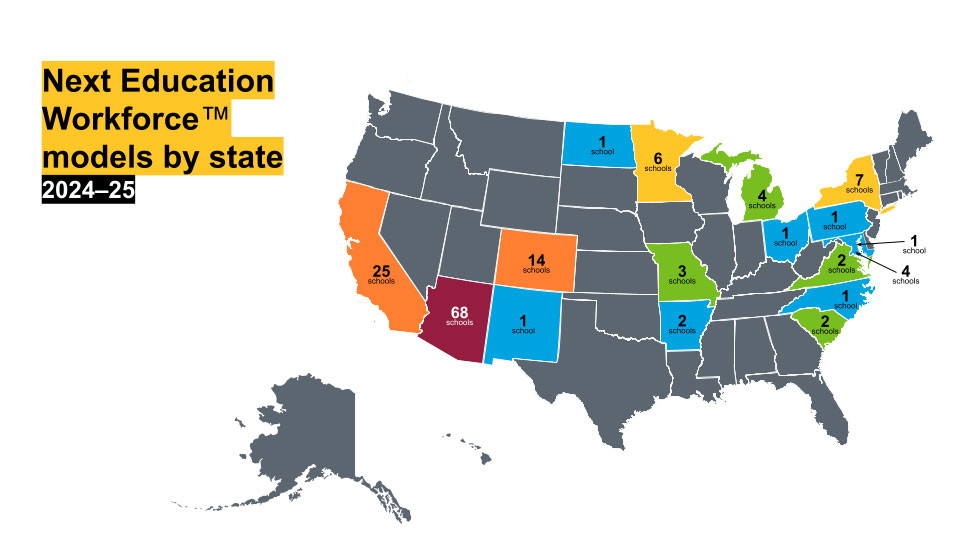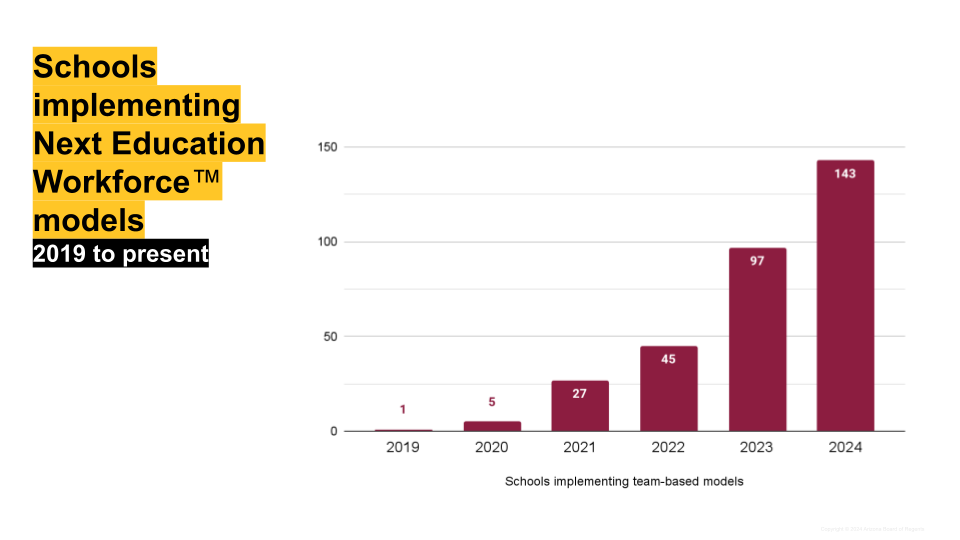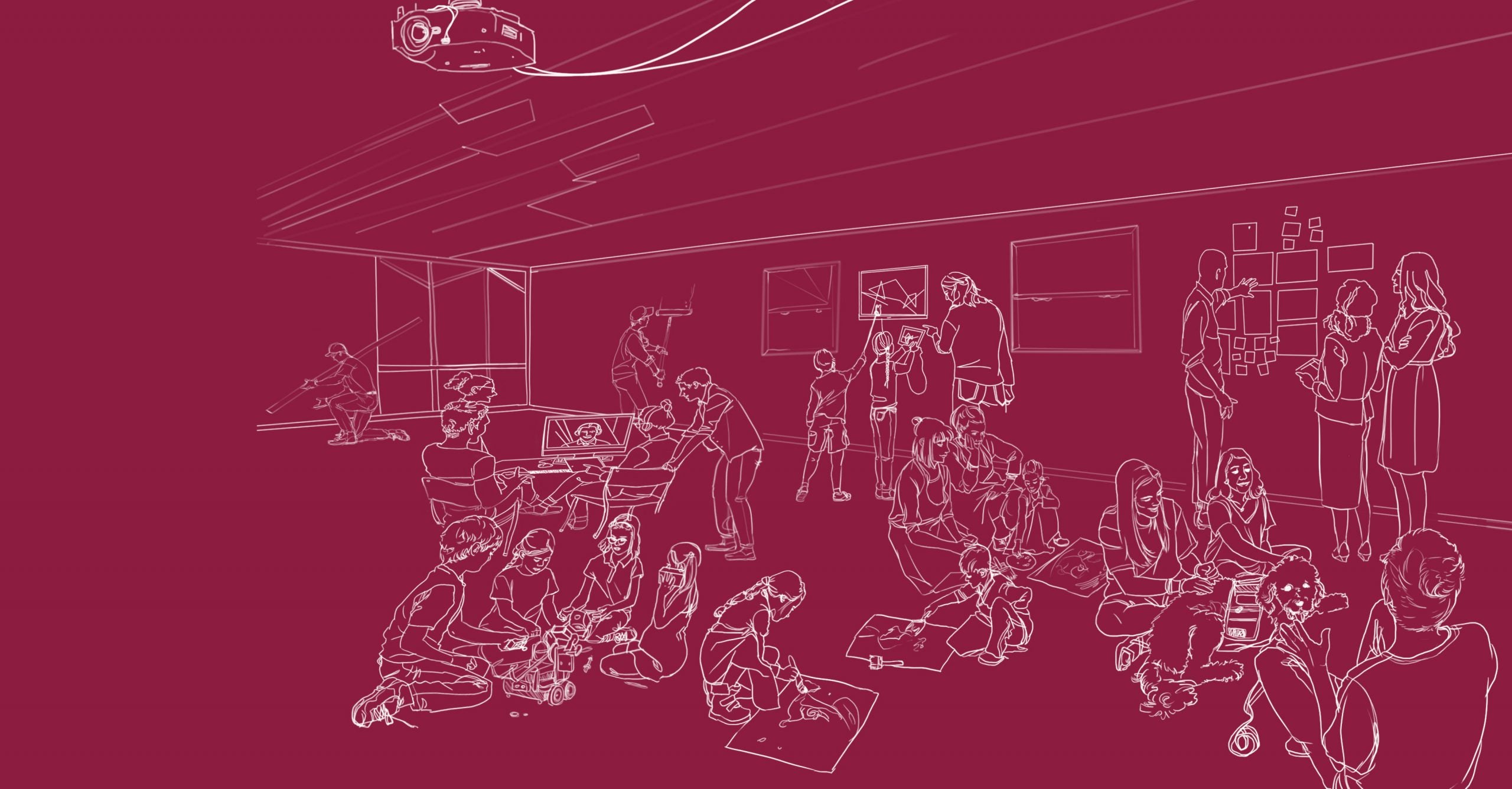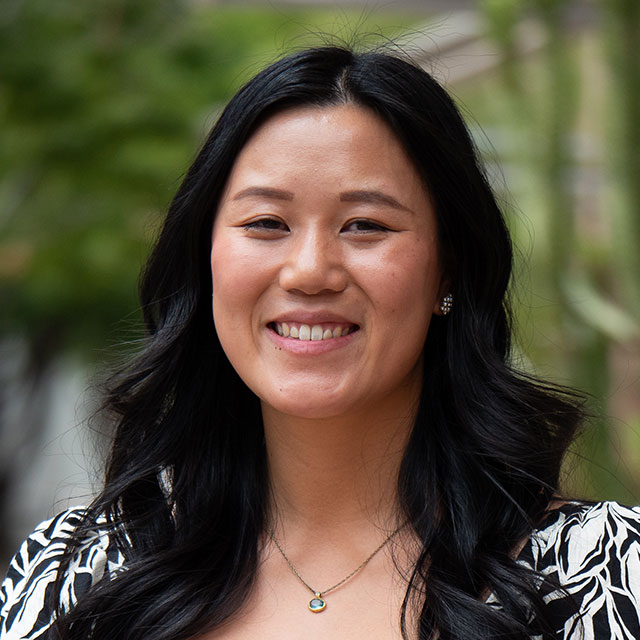If you go to a school anywhere in the country, you’ll likely find similar things: desks in classrooms; rulers and calculators in science and math classes; pencils, pens and markers in backpacks. In 143 schools across 17 states — from California to New York — you’ll also find educators working to provide better student outcomes through Next Education Workforce™ strategic school staffing models.
These innovative schools and school systems work with the initiative, based out of Arizona State University, to design and implement team-based staffing models. The models are part of a nationwide movement to improve student outcomes and educator experiences through school staffing.

Brent Maddin, the executive director of the Next Education Workforce initiative, has led the organization since its inception in 2019 and said he is encouraged by the 2024-25 implementation numbers and hopeful for the ways in which they continue to catalyze changes in the way staff schools across the country.
“Over the last six years, the number of schools we have directly supported has more or less doubled every year. It’s incredibly promising,” Maddin said. “The way that we have classically defined the educator role is really challenging, and I think that it’s widely becoming recognized that we need to do something differently in the way that we staff our schools to get profoundly better results — not only for our young learners but for our educators.”
Reaching schools across the country can be challenging. Maddin said the initiative has gained momentum outside of Arizona due partly to the suite of experiences and events the Next Education Workforce offers, from Virtual and In-Person Site Visits to the Strategic Staffing Summit. It’s also developed regional partnerships to deepen implementation in states such as Michigan, Colorado and California, where educators have collectively implemented Next Education Workforce models at 43 schools.
In Michigan, a partnership with the Michigan Educator Workforce Initiative is catalyzing the launch of effective and sustainable team-based staffing models in a geographically diverse set of school systems across the state. In Colorado, the Opportunity Now grant program through the Office of Economic Development and Trade funded a collaboration with the South Central BOCES, the Public Education Business Coalition and the Colorado Department of Education to expand team-based models across Colorado. Investments from local and national funders have also enabled the Next Education Workforce to partner with Teachers College of San Joaquin and Thrive to help support schools in California.
“I’m feeling encouraged that through the strategic support of those models, it’s possible to build local proof points, which we have seen catalyze larger changes in the way schools are staffed across a region,” Maddin said.

Word about innovative team-based models also gets out through conferences, the initiative’s book, “The Next Education Workforce: How Team-Based Staffing Models Can Support Equity and Improve Learning Outcomes,” and, this year, testimony given by Dean of Mary Lou Fulton College for Teaching and Learning Innovation Carole G. Basile to the House Committee on Education and the Workforce.
“The default model of schooling — one teacher, one classroom — treats all learners as identical. It mistakes the statistical abstraction of an average learner for a real human being. And, in assuming that all learners have the same educational needs, it assumes that all teachers need the same set of skills. Teacher shortage is a downstream effect of a workforce design problem,” Basile said during her testimony in September 2024. “A potential solution to that problem is an education workforce comprising of professionals with varying sets of skills, different areas of content knowledge and multiple modes of pedagogical expertise. And we need them to work in coordinated teams.”
Ultimately, the biggest contributors to the rise in Next Education Models are the educators and leaders at the schools and systems who are sharing their experiences with other educators.
“We relish in the fact that it’s the schools that have committed to this work already that are sharing what they’re learning with others, that I think is helping to propel and create momentum,” Maddin shared. “At the end of the day, we have so many people that when they come and they put eyes on the models and they talk to educators, students and family members, rethinking staffing models just becomes something that they can’t afford not to do.”

Video: What is the Next Education Workforce?
How the Next Education Workforce initiative at Arizona State University's Mary Lou Fulton College for Teaching and Learning Innovation works with schools and other partners.

Elements of the Next Education Workforce
There is no one-size-fits-all Next Education Workforce model. The diverse contexts, assets and needs of each school inform the design and implementation of each model. However, all Next Education Workforce models share several common elements. This document describes the Elements of the Next Education Workforce found across dozens of schools that have launched successful team-based models.



